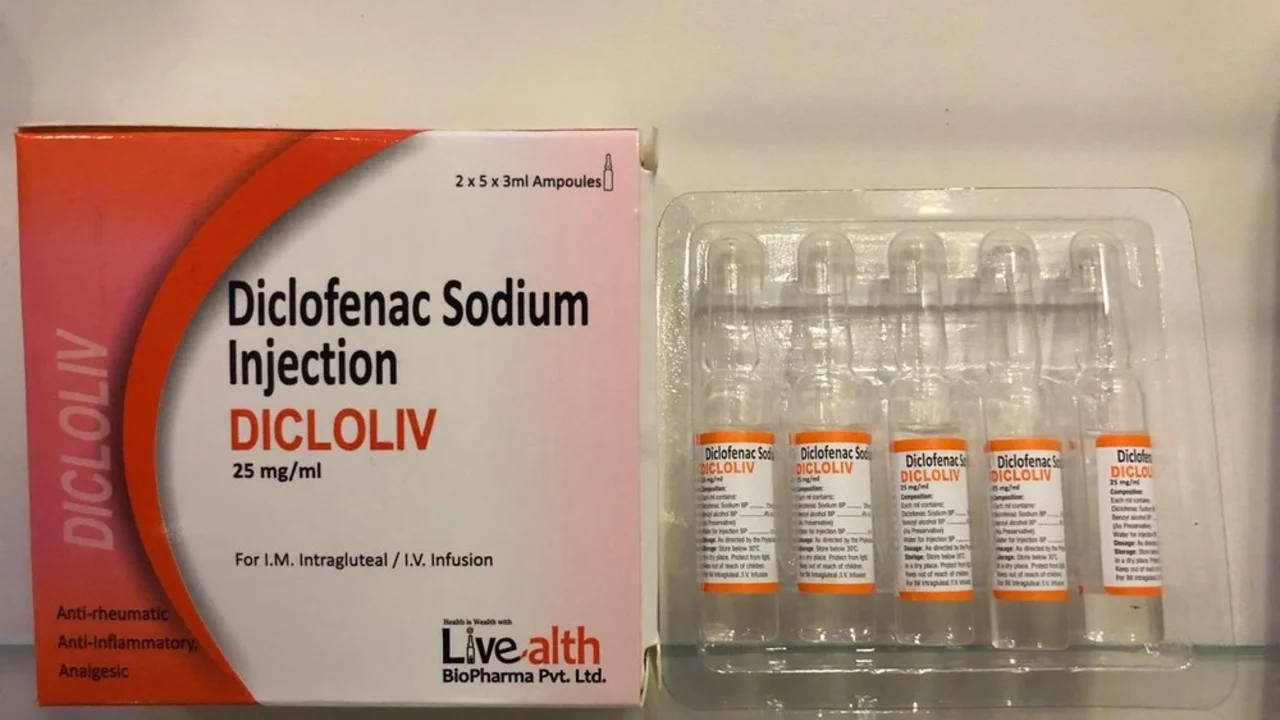 Sep, 4 2023
Sep, 4 2023
Breaking Down Diclofenac Sodium
If I were to mention Diclofenac Sodium around my breakfast table, both Archer and Malia would likely raise their eyebrows in between bites of their French toast. Like many households (maybe yours too), we weren't fully aware of this innocuous-sounding substance’s significant environmental impact. That’s right, folks. We aren't just talking about a compound you might have encountered in your science books. Diclofenac Sodium, commonly found in pain relievers, is actually having a profound effect on our ecosystem, and it's time we had a little chat about it.
The topic might seem daunting at first glance, like trying to help Archer with his algebra homework or watching Malia attempting a double pirouette for her ballet class. Yet, just as we face these tasks head-on, we can also tackle the issue of Diclofenac Sodium together. Breaking it down into palatable chunks of information (just like cutting up Malia's chicken into manageable pieces) is what we'll do.
Understanding Diclofenac Sodium
First things first, Diclofenac Sodium is a common non-steroidal anti-inflammatory drug (NSAID), widely used to relieve pain, inflammation, and fever. However, despite its benefits in the medical field, it is creating an environmental stir, much like when Archer decides to learn drumming after bedtime. When Diclofenac Sodium is excreted from our bodies or improperly disposed of, it can enter our water systems, creating a slew of unintended consequences that might startle you as much as the sound of crashing cymbals from Archer's drum kit.
The Journey into our Ecosystem
The way Diclofenac Sodium interacts with our ecosystem is as fascinating as one of Malia's mystery novels. When taken orally, Diclofenac Sodium passes through our bodies. However, not all of it is absorbed. It's like when Archer's room is "cleaned", but a couple of LEGO pieces escape the purge. This surplus finds its way into wastewater, and because conventional wastewater treatment methods can't always effectively remove it, Diclofenac Sodium can slip into surface and groundwater systems, causing a wave of disruptions.
The Impact on Aquatic Life
When you're snorkeling with your kids, the last thing on your mind is Diclofenac Sodium. But it's time we consider the aquatic creatures whose habitats are being disrupted by this drug. In surprising ways, Diclofenac Sodium behaves like the sly antagonist in Malia's detective novels. Much like these stealthy culprits, it affects aquatic organisms without flashing a warning sign. Research indicates that it harms the reproduction, growth, and development of various aquatic species. If we do not address this issue, the silent havoc the drug wreaks could lead to the breakdown of delicate aquatic ecosystems.
The Bird's Eye View
Once, while birdwatching, I spotted an unusual sight - a vulture languidly resting on a tree. It reminded me of the alarming decline of certain vulture populations in Asia due to Diclofenac Sodium. Interestingly, this drug, in use in veterinary services, found its way into vultures when they consumed the carcasses of treated livestock. We might not have vultures in our backyard (thankfully), but it's a stark example of how Diclofenac Sodium can indirectly affect wildlife.
A Closer Look at Human Health Impact
Like when Archer has the sniffles, this drug can also impact our health. Diclofenac Sodium in water systems is not just an ecological issue. What starts in the environment can find its way back to us, much like Malia's collection of ballet shoes keeps growing despite my efforts. Long-term exposure can trigger a range of health effects, including endocrine disruption and drug resistance. It's a cycle we need to break for our health, and the health of our planet.
What Can We Do?
You might be thinking, "Felicity, this sounds scary. What can we do?" Well, like the time I tackled Archer's room remodel, we've got solutions in our hands. These include proper disposal of medicines, pushing for advanced water treatment methods, and raising awareness about the environmental impact of Diclofenac Sodium. With these steps, we can ensure this pain reliever doesn't end up causing more pain to our environment.
The Bright Side
While this issue may seem as daunting as getting through a spider-infested attic, it's not all doom and gloom. With increased awareness and collective moves towards sustainable actions, we can lessen the environmental impact of Diclofenac Sodium. Just as Archer eventually masters his noisy drum solos, or Malia finally perfects her pirouettes, we can turn this around. It's a process, a journey really. And hey, it might not be as thrilling as unmasking the villain in Malia's detective novels, but it's one very real mystery we can help solve together.